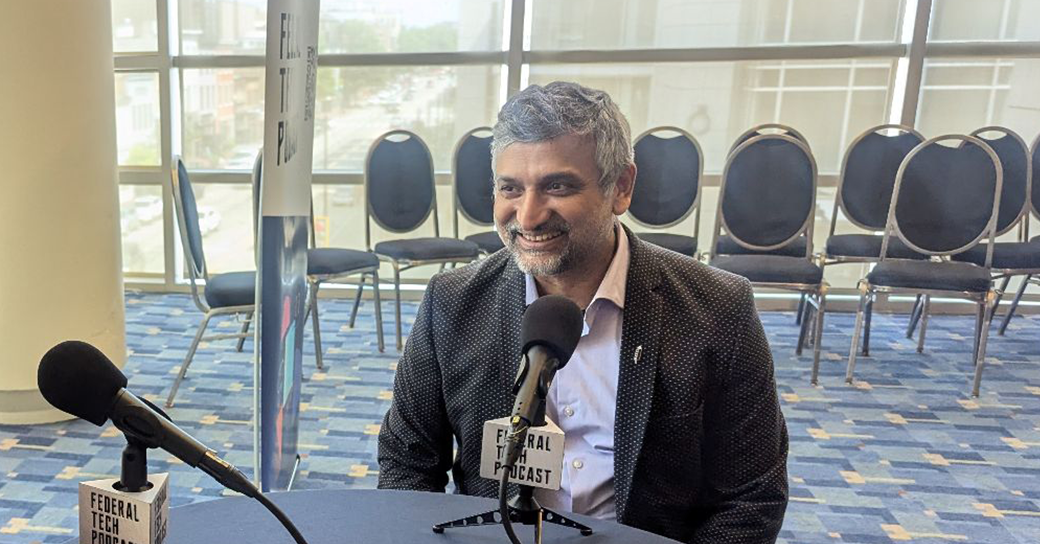Recording live from the AWS Summit Washington, D.C., Karsun’s Badri Sriraman sits down with John Gilroy and the Federal Tech Podcast to discuss all things AI, accelerating legacy systems modernization and hyperlocal contextualization. Badri is the Vice President of the Karsun Innovation Center. Here, teams work to eliminate or reduce friction for the agencies modernizing their legacy systems. As part of that work, they developed ReDuX AI, a toolkit using AI resources to address common issues related to modernizing these older, more complex legacy systems. Throughout the interview, Badri and John discuss the costs and security risks associated with staying on current systems and the opportunity for AI to provide insight through hyperlocal contextualization to tackle these challenges.
Addressing the O&M Problem
The interview begins by acknowledging the drag aging infrastructure has on these agencies’ enterprise systems. The issue becomes intractable when operations and maintenance (O&M) costs become so high they take up the budget that would otherwise be used for modernization and systems enhancements. A 2023 Government Accountability Office (GAO) report examined the 10 critical systems it identified most in need of modernization. Some of those systems were over 50 years old and, in total, cost the government upwards of $337 million annually to operate and maintain.
In addition to the O&M costs, complex relationships between different systems components, older programming languages like COBOL, and outdated documentation all contribute to the difficulty of modernizing mission-critical legacy systems like those studied. As Badri reveals in the interview, artificial intelligence (AI) can be used to address many of those concerns. Moreover, those same AI tools may accelerate the transition, further reducing O&M costs as agencies move away from these legacy systems.
Eating the Elephant
In the interview, Badri shares a key component of Karsun’s AI-accelerated modernization methodology, hyperlocal contextualization. In a traditional modernization project, teams typically take an incremental approach. To “eat the elephant,” teams go one step at a time, optimizing as they modernize to reduce costs. The analysis required to peel away each part of the legacy system could slow down modernization to a yearslong process in highly complex systems. Throughout the process, these teams must untangle how different parts of the system integrate and work together.
Alternatively, using AI teams still move incrementally, avoiding the pitfalls of Big Bang Modernization. However, they also use AI to identify and map these relationships within legacy systems. This AI assistance helps those teams move at a rapid pace. Working together with the human team and stakeholders, the AI can quickly create a fuller understanding of the system, its impact on the mission and provide new insights into optimization opportunities during the modernization process. This analysis is the first step in using AI for hyperlocal contextualization.
The Security Imperative
An equally pressing concern is rising security threats. The 2023 GAO report found among the chief concerns for these aging systems were outdated hardware and security vulnerabilities. The same processes that help modernization teams optimize to reduce O&M costs can also be used to move from less secure systems to more secure systems based on industry standards and best practices.
Jumping in with Hyperlocal Contextualization
With more advanced large language models (LLMs), AI tools cannot only write the code but also review, debug, and make recommendations. Powered by AWS Bedrock, ReDuX AI not only takes the insights from its eat the elephant analysis but also makes recommendations to Karsun developers using the context generated from those insights. Plus it can then incorporate best practices and security policies into those recommendations. Using a tool like ReDuX AI, the security optimization recommendations are customized to the complexities found in that legacy system, resulting in a modernization process designed to optimize costs and security. Badri discusses this hyperlocal contextualization in greater depth in the interview.
The future is bright. In a 2019 report, the GAO shared agencies provided 94 examples of successful modernization initiatives over the five years studied. While some of the most challenging projects remain, AI tools, like those used by ReDuX, create a future where the remaining mission-critical systems modernize a possibility. Check out the full interview at www.theoakmontgroupllc.com/ep-161-how-to-overcome-the-challenge-of-legacy-systems/ or visit GoRedux.AI to learn more.

